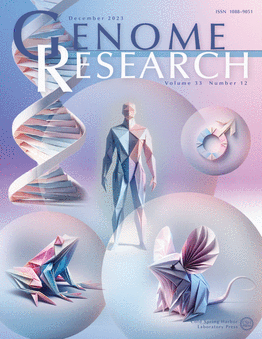Building better genome annotations across the tree of life
IF 6.2
2区 生物学
Q1 BIOCHEMISTRY & MOLECULAR BIOLOGY
引用次数: 0
Abstract
Recent technological advances in long-read DNA sequencing accompanied by reduction in costs have made the production of genome assemblies financially achievable and computationally feasible, such that genome assembly no longer represents the major hurdle to evolutionary analysis for most nonmodel organisms. Now, the more difficult challenge is to properly annotate a draft genome assembly once it has been constructed. The primary challenge to annotations is how to select from the myriad gene prediction tools that are currently available, determine what kinds of data are necessary to generate high-quality annotations, and evaluate the quality of the annotation. To determine which methods perform the best and to determine whether the inclusion of RNA-seq data is necessary to obtain a high-quality annotation, we generated annotations with 12 different methods for 21 different species spanning vertebrates, plants, and insects. We found that the annotation transfer method TOGA, BRAKER3, and the RNA-seq assembler StringTie were consistently top performers across a variety of metrics including BUSCO recovery, CDS length, and false-positive rate, with the exception that TOGA performed less well in some monocots with respect to BUSCO recovery. The choice of which of the top-performing methods will depend upon the feasibility of whole-genome alignment, availability of RNA-seq data, importance of capturing noncoding parts of the transcriptome, and, when whole-genome alignment is not feasible, the relative performance in BUSCO recovery between BRAKER3 and StringTie. When whole-genome alignment is not feasible, inclusion of RNA-seq data will lead to substantial improvements to genome annotations.在生命之树上建立更好的基因组注释
最近,随着长读程 DNA 测序技术的进步和成本的降低,基因组组装的生产在经济上是可行的,在计算上也是可行的,因此基因组组装不再是大多数非模式生物进化分析的主要障碍。现在,更困难的挑战是如何在构建基因组组装草案后对其进行适当的注释。注释的主要挑战是如何从目前可用的无数基因预测工具中进行选择,确定哪些类型的数据是生成高质量注释所必需的,以及评估注释的质量。为了确定哪种方法效果最好,并确定是否有必要加入 RNA-seq 数据以获得高质量的注释,我们使用 12 种不同的方法为脊椎动物、植物和昆虫等 21 个不同物种生成了注释。我们发现,注释转移方法 TOGA、BRAKER3 和 RNA-seq 组装器 StringTie 在各种指标(包括 BUSCO 恢复、CDS 长度和假阳性率)上始终表现最佳,只有 TOGA 在某些单子叶植物的 BUSCO 恢复方面表现较差。选择哪种性能最好的方法取决于全基因组比对、RNA-seq 数据的可用性、捕获转录组非编码部分的重要性,以及当全基因组比对不可行时,BRAKER3 和 StringTie 在 BUSCO 恢复方面的相对性能。当全基因组比对不可行时,纳入 RNA-seq 数据将大大改进基因组注释。
本文章由计算机程序翻译,如有差异,请以英文原文为准。
求助全文
约1分钟内获得全文
求助全文
来源期刊

Genome research
生物-生化与分子生物学
CiteScore
12.40
自引率
1.40%
发文量
140
审稿时长
6 months
期刊介绍:
Launched in 1995, Genome Research is an international, continuously published, peer-reviewed journal that focuses on research that provides novel insights into the genome biology of all organisms, including advances in genomic medicine.
Among the topics considered by the journal are genome structure and function, comparative genomics, molecular evolution, genome-scale quantitative and population genetics, proteomics, epigenomics, and systems biology. The journal also features exciting gene discoveries and reports of cutting-edge computational biology and high-throughput methodologies.
New data in these areas are published as research papers, or methods and resource reports that provide novel information on technologies or tools that will be of interest to a broad readership. Complete data sets are presented electronically on the journal''s web site where appropriate. The journal also provides Reviews, Perspectives, and Insight/Outlook articles, which present commentary on the latest advances published both here and elsewhere, placing such progress in its broader biological context.
 求助内容:
求助内容: 应助结果提醒方式:
应助结果提醒方式:


